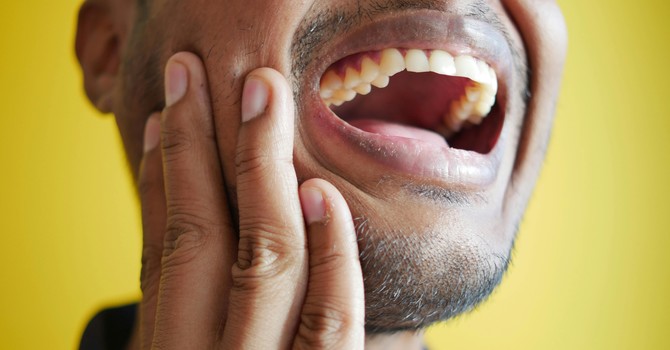
Heat vs. Cold Therapy
When it comes to treating injuries, one of the most common questions Rochester, NY chiropractors and patients face is: “Should I use ice or heat?” Understanding when and why to apply each therapy can significantly impact healing, pain management, and long-term recovery.
This guide offers evidence-based insight into the mechanisms, benefits, and best-use cases for both cold and heat therapy, helping clinicians and patients alike make informed decisions.
Cold Therapy (Cryotherapy): When and Why to Use Ice
Mechanism of Action
Cold therapy works by:
-
Reducing blood flow via vasoconstriction
-
Slowing metabolic activity
-
Numbing pain receptors (NCV inhibition)
-
Controlling inflammation through decreased immune cell activity
Proven Benefits
-
Pain relief (via nerve desensitization and muscle spasm reduction)
-
Reduced swelling (limits fluid accumulation)
-
Possibly reduces secondary injury (mostly in animal studies; human data inconclusive)
When to Use Ice Therapy
-
Acute injuries (sprains, strains, contusions): Especially within the first 6–12 hours post-injury
-
Post-op recovery (e.g., knee arthroplasty)
-
Migraine headaches
-
Acute flare-ups of rheumatologic conditions (e.g., gout)
How to Apply Ice
-
Apply for 10–20 minutes
-
Use ice packs, gel packs, or cryotherapy devices
-
Stop if numbness or signs of frostbite appear (CBAN: Cold, Burning, Aching, Numb)
DON'T Use Ice If You Have...
-
Impaired circulation
-
Cold hypersensitivity (Raynaud's, cryoglobulinemia, etc.)
-
Open wounds, regenerating nerves, skin anesthesia
-
Whole-body cryotherapy: use caution due to potential systemic effects (e.g., hypotension)
The Ice Controversy: Rethinking RICE
Once a gold standard, the RICE protocol has evolved. Even its creator, Dr. Gabe Mirkin, now advocates caution with prolonged icing.
Studies show that prolonged cryotherapy may:
-
Delay tissue regeneration
-
Increase scar tissue
-
Impede long-term healing
Modern Approach:
The PEACE & LOVE framework is gaining traction:
-
Protection, Elevation, Avoid anti-inflammatories, Compression, Education
-
Followed by: Loading, Optimism, Vascularization, Exercise
Heat Therapy: When and Why to Use Heat
Mechanism of Action
Heat therapy increases:
-
Blood flow and oxygenation
-
Metabolic activity
-
Tissue elasticity and muscle flexibility
-
Pain relief through thermoreceptor stimulation
Proven Benefits
-
Pain relief (inhibits pain signals at the spinal cord level)
-
Improved joint and muscle mobility
-
Enhanced circulation and muscle activation
-
Supports chronic pain rehab
When to Use Heat Therapy
-
Lower back pain (acute, subacute, and chronic)
-
Chronic conditions (tendinosis, osteoarthritis)
-
Subacute phases of sprains/strains (after swelling subsides)
-
Pre-exercise warm-up
-
Delayed onset muscle soreness (DOMS): Especially within the first 24 hours
-
Dysmenorrhea (menstrual cramps)
How to Apply Heat
-
Use moist heat packs, heating pads, wraps, or hot tubs
-
Optimal tissue temperature: ~104°F
-
Duration varies depending on fat depth and application type (often 20–30 minutes)
DON'T Use Heat If...
-
Do not apply during acute inflammation
-
Avoid in:
-
Active infections or open wounds
-
Autoimmune flare-ups
-
Pregnancy
-
Diabetes, MS, or other conditions that impair temperature perception
-
Heat vs. Cold: What the Research Says
| Condition/Injury Type | Recommended Therapy | Notes |
|---|---|---|
| Acute MSK injury | Cold | Best within first 6–12 hours |
| Chronic MSK pain | Heat | Improves function and reduces stiffness |
| DOMS | Early, Later | Heat better in first 24 hrs; Ice more effective after 48 hrs |
| Low back pain | Heat | Supported by clinical guidelines |
| Post-surgical (e.g., knee) | Cold | Helps control pain and swelling |
| Migraine | Cold | Especially to neck and forehead |
| Menstrual pain | Heat | Most effective and widely accepted |
Final Thoughts
Making the right decisions on whether to use ice or heat can have a big impact on how you recover! Make sure you consult with a chiropractor in Rochester, NY who knows when to use what modalities to get you better faster!



